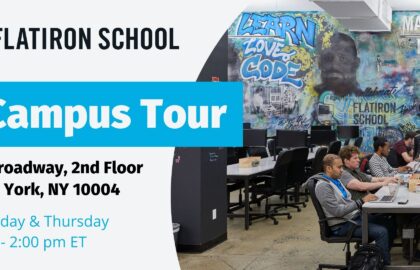Reskill

Enterprise
How Upskilling and Reskilling Saves Your Company Money
Technological advancements are reducing labor costs and getting more done in less time. But now many businesses need fewer employees. Upskill and reskill obsolete employees to retain key workers and maintain a future-ready org.
Browse by Category
- All Categories
- Admissions
- Alumni Stories
- Announcements
- Artificial Intelligence
- Career Advice
- Cybersecurity Engineering
- Data Science
- Denver Campus
- Diversity In Tech
- Enterprise
- Flatiron School
- Hackathon
- How To
- NYC Campus
- Online Campus
- Partnerships
- Software Engineering
- Staff / Coach Features
- Tech Trends
- UX / UI Product Design
- Women In Tech
